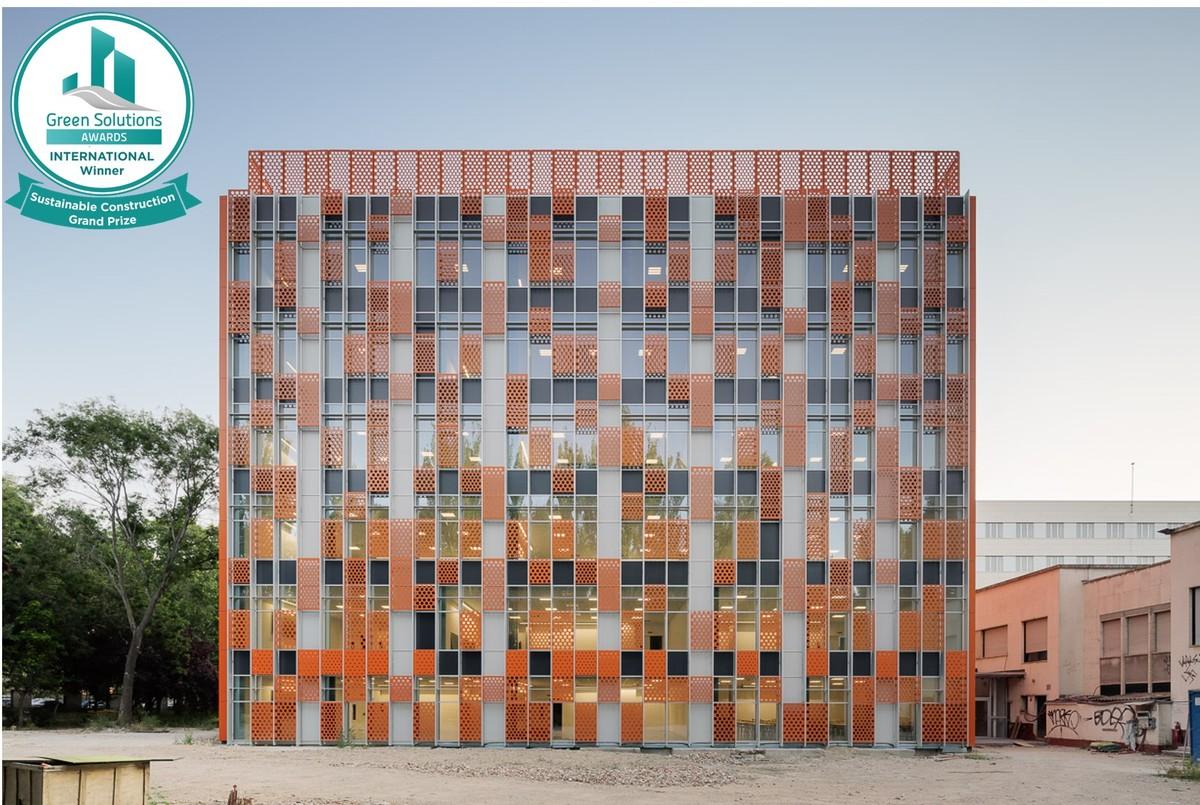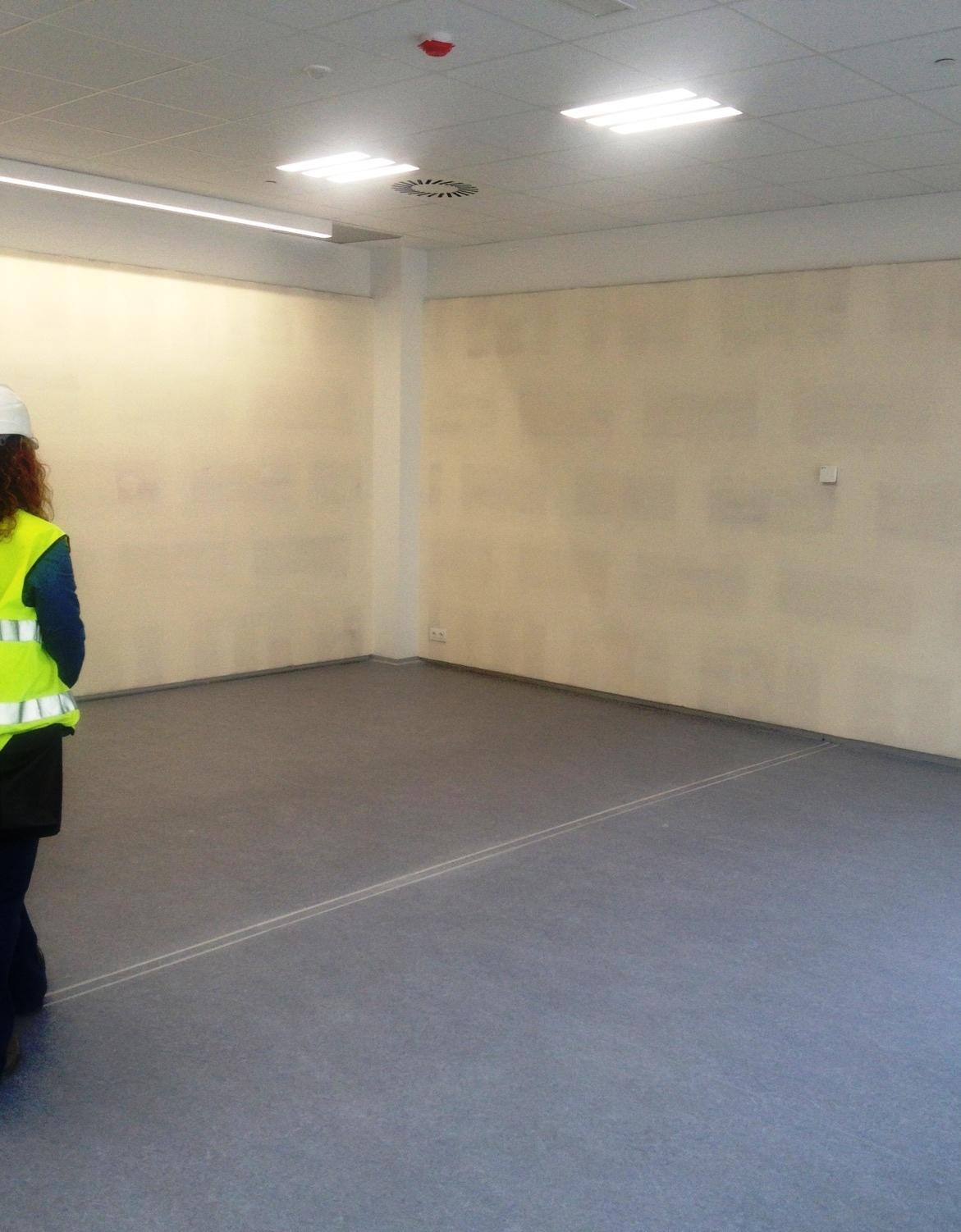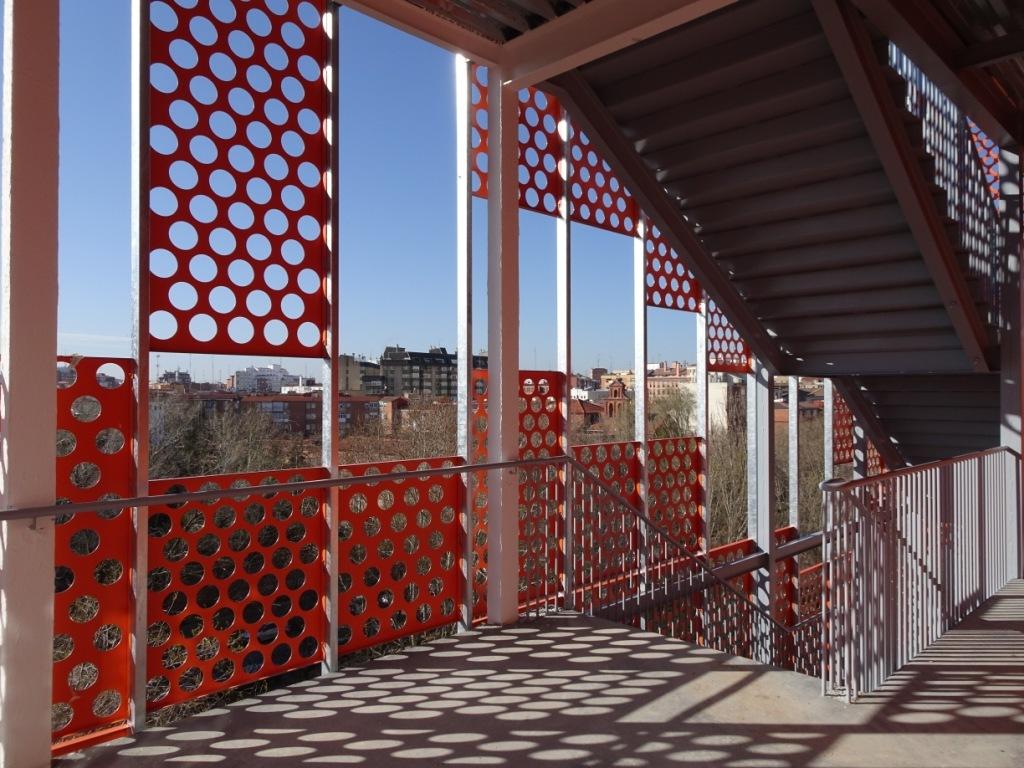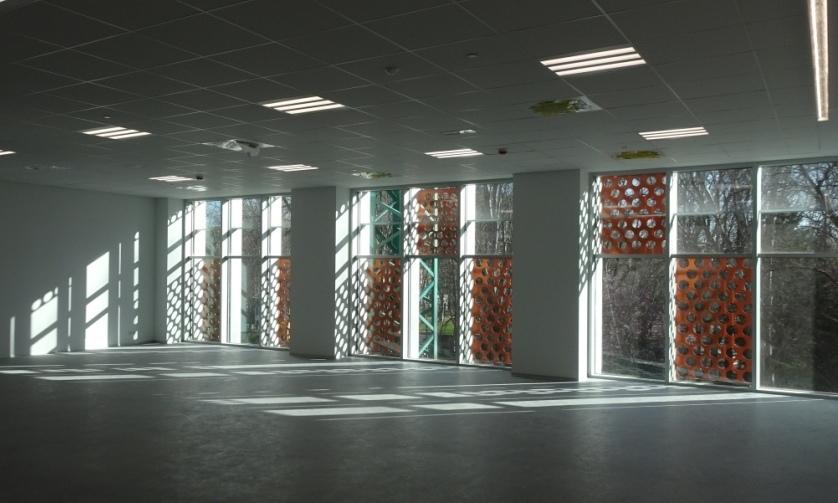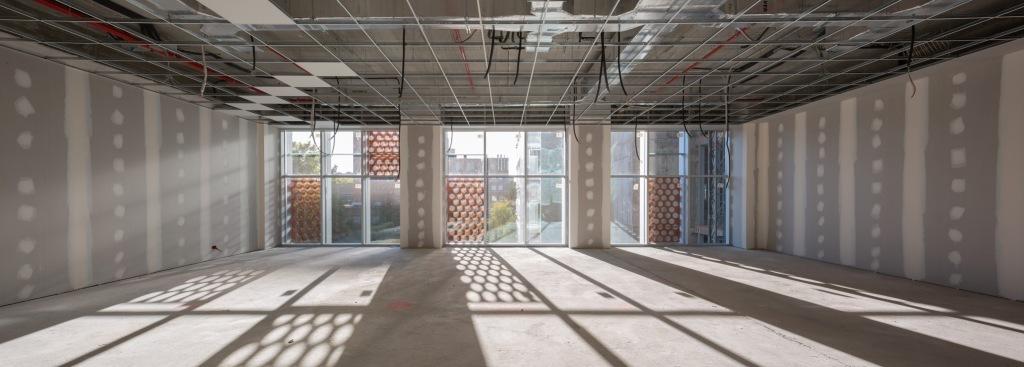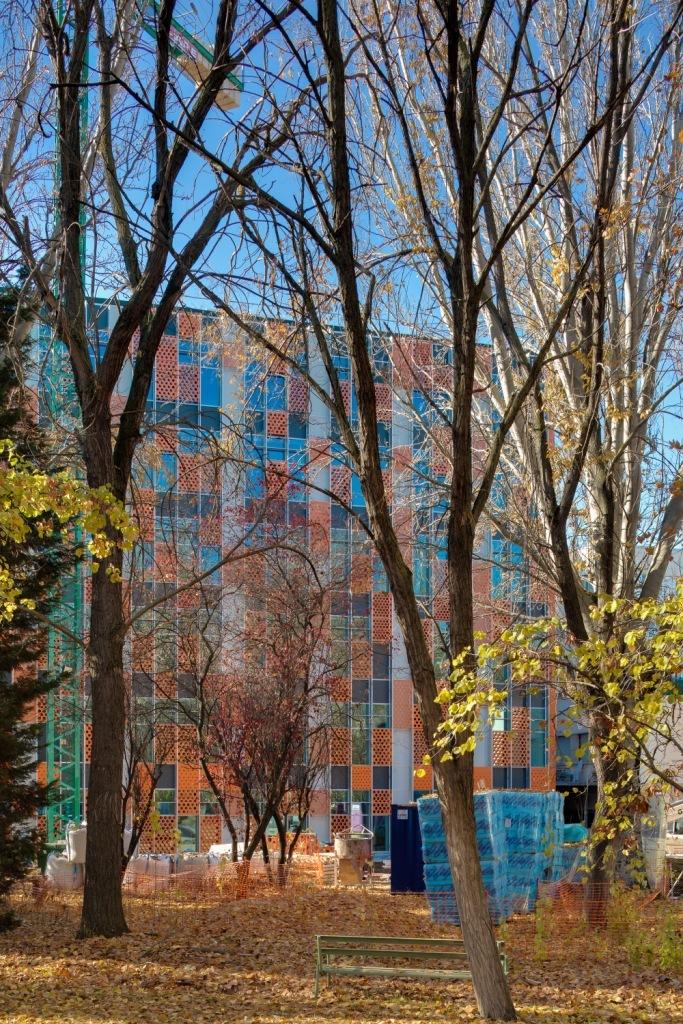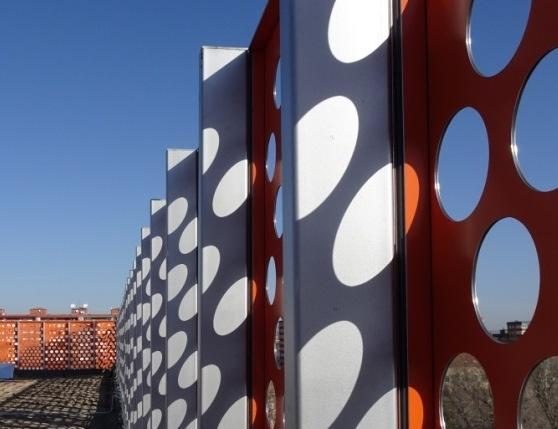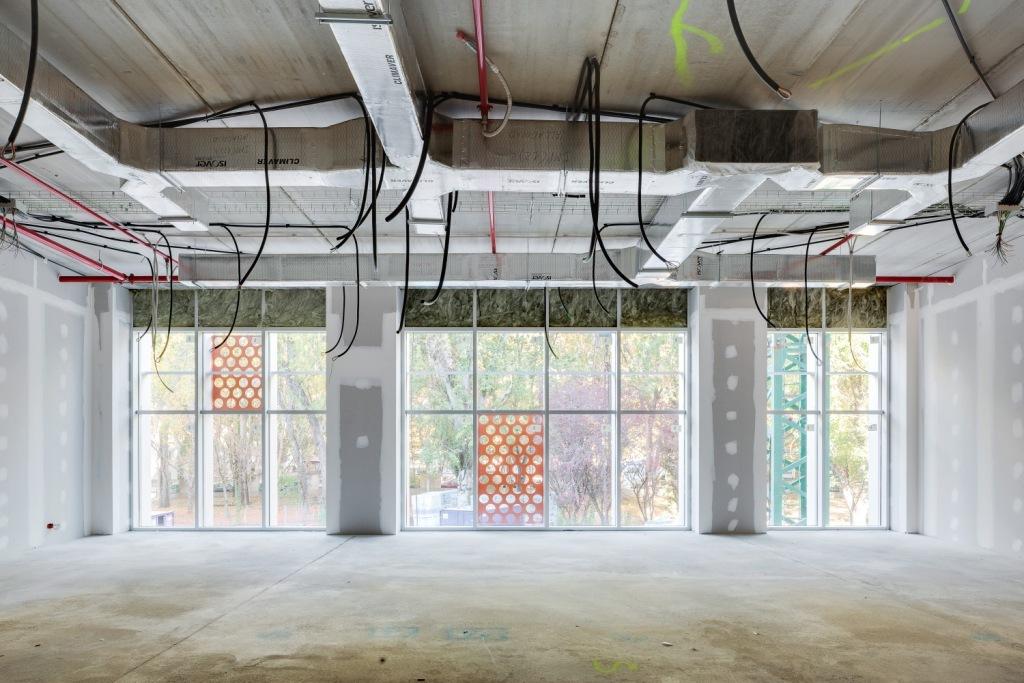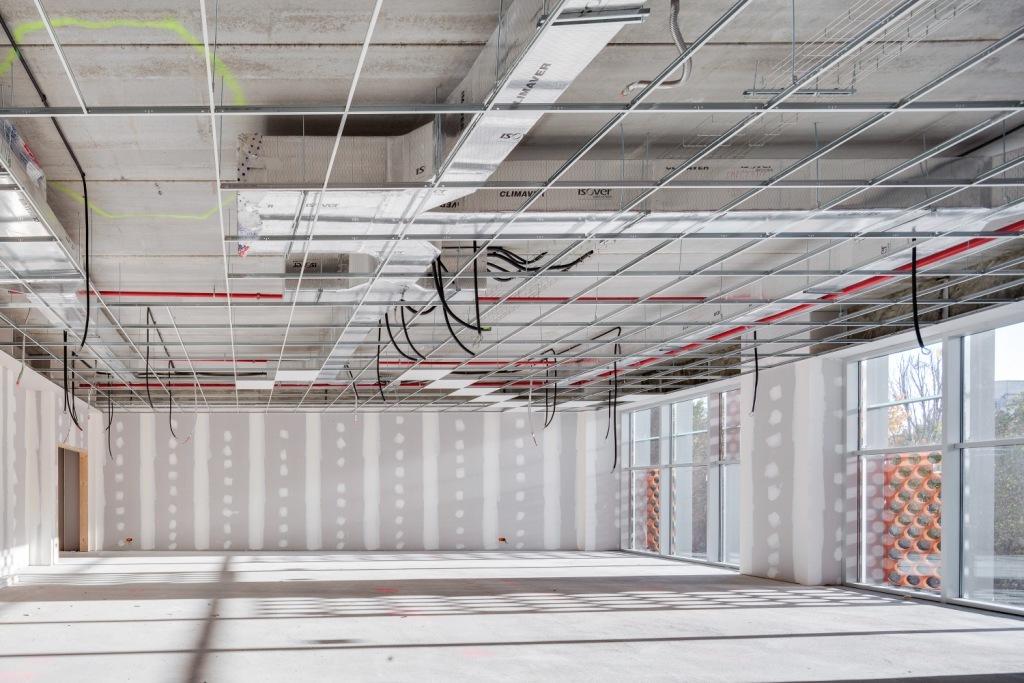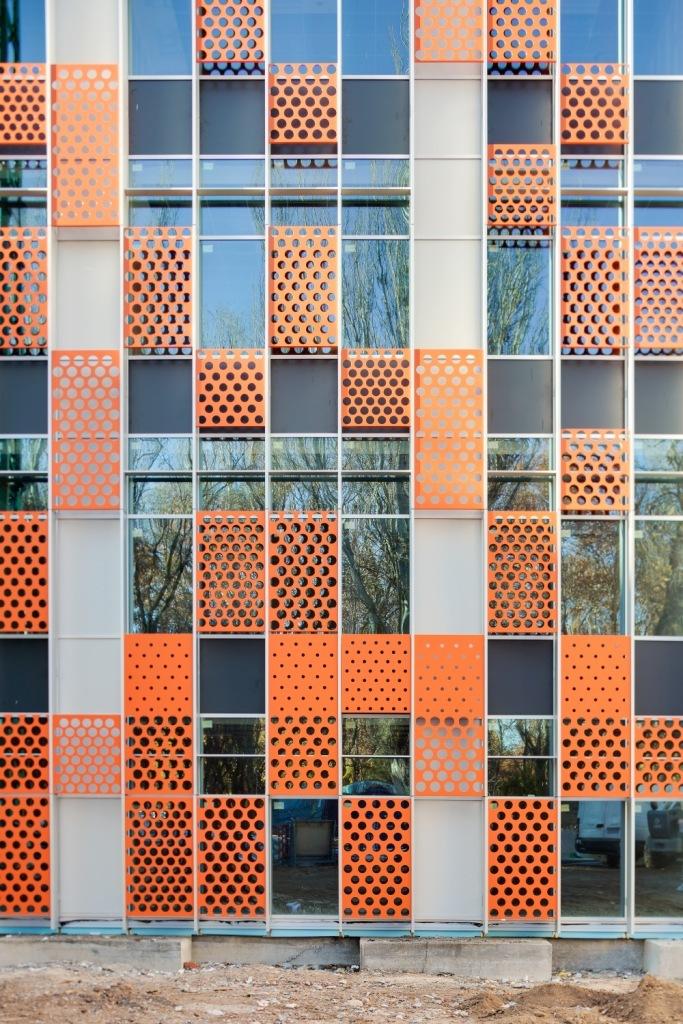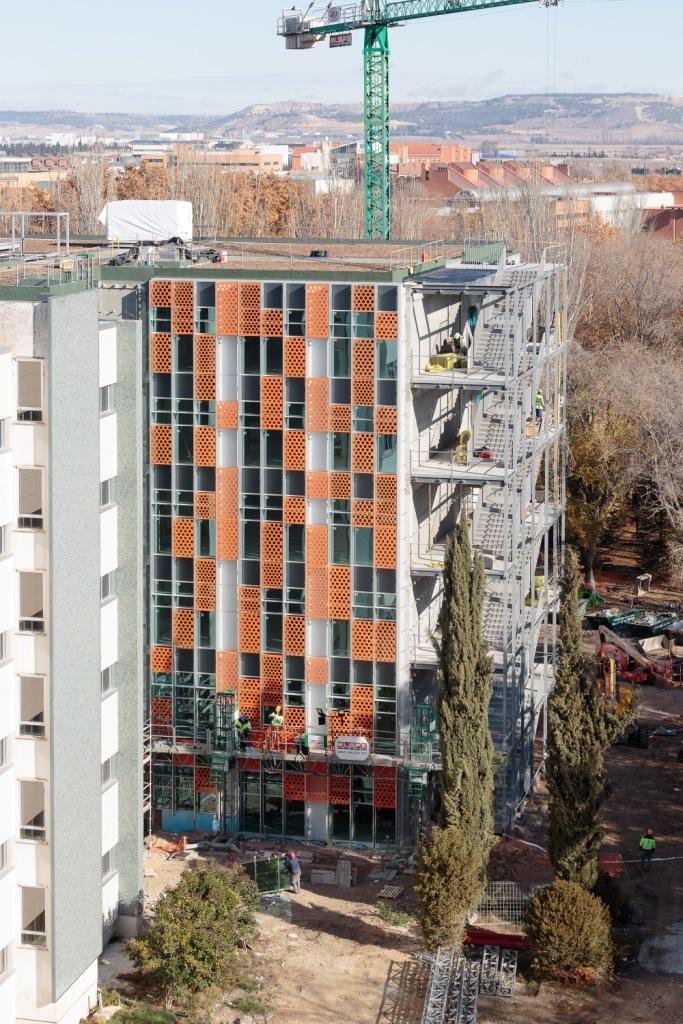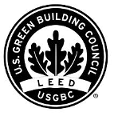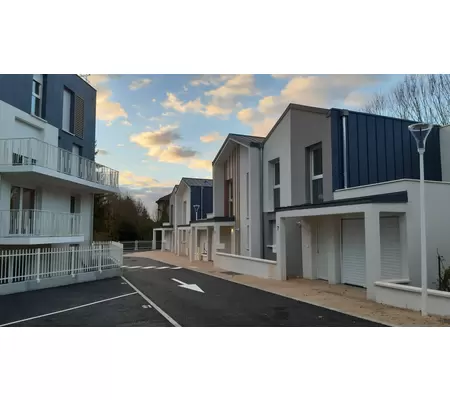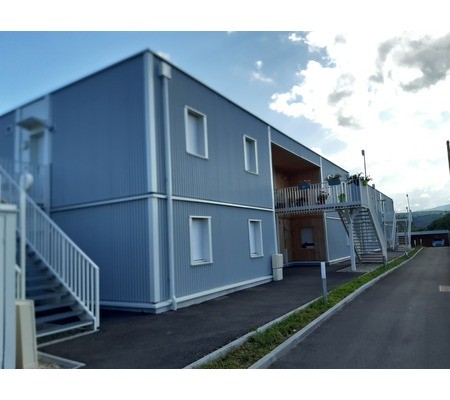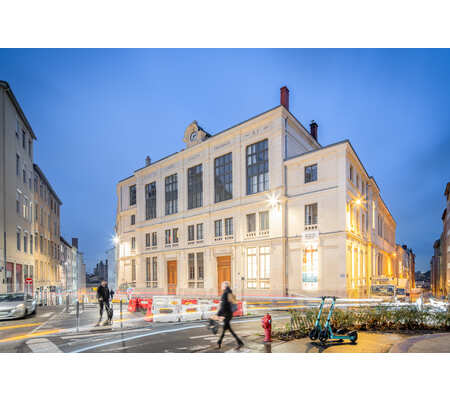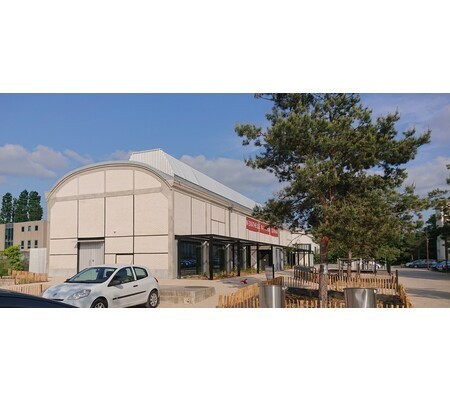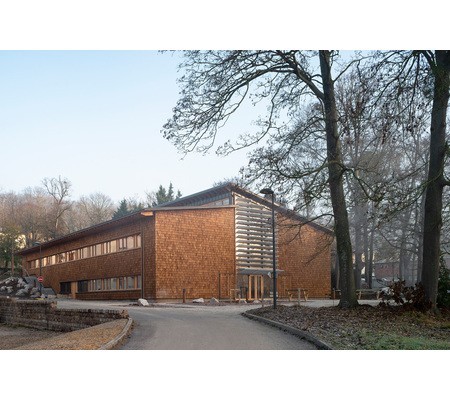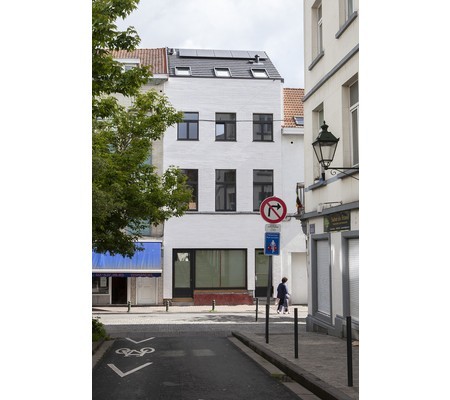Aulario IndUVA
Last modified by the author on 30/01/2019 - 09:58
New Construction
- Building Type : School, college, university
- Construction Year : 2017
- Delivery year : 2018
- Address 1 - street : Paseo del Cauce, 50A 47011 VALLADOLID, España
- Climate zone : [Csb] Coastal Mediterranean - Mild with cool, dry summer.
- Net Floor Area : 5 539 m2
- Construction/refurbishment cost : 5 700 000 €
- Number of Pupil : 2 523 Pupil
- Cost/m2 : 1029.07 €/m2
Certifications :
-
Primary energy need
307 kWhpe/m2.year
(Calculation method : )
The construction of the Aulario for the School of Industrial Engineering of the University of Valladolid presents an extraordinary casuistry from several points of view: it recovers a well-known space of the traditional culture of the university, it has been projected as a building of almost null energy, and it recovers and improves the previous experience of the University of Valladolid in the realisation of sustainable building in all its aspects (cultural, economic, environmental, and social). Although it is newly built, it is connected to the other buildings and facilities of the Campus, where a general recovery and sustainability intervention is being carried out. It will be externally certified through the GREEN GBCe, LEED, and Well certifications.
The building is composed of 34 classrooms of different sizes, with a university calendar, an intermittent and irregular schedule and a variable occupation from 100 to 2,523 students in a constructed area of 5,845 square meters. It is located within the headquarters of Mergelina, a university area that hosts other buildings such as workshops, laboratories, residential centers, and also includes gardens, recreation areas and parking. It has a long tradition in the city, and several generations of students and teachers from different areas of science have passed through it.
The Aulario IndUVA will embrace the process of continuous learning developed by the European Higher Education Area (flipped classroom), optimising the environments in which the student develops his work, both inside and outside the university classrooms. It will allow both collective and individual learning, with spaces transformed into dynamic and interactive environments for new teaching techniques and methodologies, creating adaptable spaces where students can choose when and where they learn, formally or informally, with the advances that digitization offers to the education of students. The incorporation of the use of Information and Communication Technologies (ICT) will led to more opportunities in the continuous access to learning and will provide a complement to internationalisation.
The building and its environment have taken into consideration the broadest possible accessibility as one of the design objectives.
See more details about this project
http://comunicacion.uva.es/export/sites/comunicacion/01.lauvainforma/3d0bb80f-1c8b-11e8-9079-d59857eb090a/Data reliability
3rd part certified
Contractor
Construction Manager
Stakeholders
Designer
Francisco Valbuena García
http://www.uva.esArchitect. Project and construction management.
Developer
Universidad de Valladolid- Vicerrectorado de Patrimonio e Infraestructuras
http://www.uva.es/export/sites/uva/1.lauva/1.03.vicerrectorados/1.03.05.infraestructurasPromotion of the building.
Other consultancy agency
Torre de Comares Arquitectos S.L.P
María Jesús González Díaz
http://www.mjg.esEnvironmental Consulting- Assessed Accredited VERDE-GBCe
Other consultancy agency
Ana Jiménez / María de la O García /Manuel Muñoz / José Luis Muñoz
Consulting and assistance to the Execution Project
Thermal consultancy agency
Cristina Gutiérrez Cid
Cristina Gutiérrez Cid
Consulting and environmental support - Assessed AEDitado VERDE-GBCe
Environmental consultancy
Vega Ingeniería
Rafale vega / Borja Román
http://vegaingenieria.comLEED Accredited Evaluator
Other consultancy agency
José Emilio Nogués / Diego Tamayo
BIM support
Structures calculist
Pejarbo SL
Calculator structures
Construction company
REUQAV Ingenieros
Jesús Vaquer
Environmental consultancy
Cristina Cano Herreras
Universidad de Valladolid-Oficina de Calidad Ambiental y Sostenibilidad
http://www.uva.es/Others
Antonio Vázquez Photo.
http://www.antoniovphoto.comArchitecture Photography / photos 16 to 20
Contracting method
Other methods
Owner approach of sustainability
The University of Valladolid, promoter of the building from the Vice-Rectorate for Patrimony and Infrastructures, considers the realisation of this building, as well as other previous ones such as the LUCIA building, like an opportunity for investigation and growth in the area of sustainable edification. The realisation of the building itself can be a field of research, an opportunity for the incorporation of new solutions, and even the verification and control of existing methods, thus becoming a testimony of the possibility of achieving the greatest possible sustainability in buildings. The objective is to use the growth needs of the University of Valladolid as opportunities to advance in the field of sustainability as an educational community, in cultural, social and technical fields.
Architectural description
The final image of the building reflects the complete coordination between traditional elements of the environment (the garden, the connection with other buildings), with techniques adapted to new forms of learning and previous experience obtained in terms of environmental architecture. It is a building of monolithic volume, with its own distinctive and personal language, in which elements such as modulation and colour are integrated, strong and remarkable as an identity element of the building, and supported by an absolute and radical technical functionality seeking the comfort of the students. The design and technical team already have enough experience to solve the challenges of this new architecture that integrates the maximum knowledge in sustainability issues. The IndUVa has, in addition to the circumstances already mentioned and those of its function, two main characteristics. The first one is its status as an autonomous building but annexed and linked to the general university complex and the main building, whose exploitation and coordinated use should be part of it. This main building in which it depends will be rehabilitated, which requires some coherence in geometry, distributions, and connections in terms of facilities and operation. The second characteristic lies in its assigned parcel, which has a specific interest and is the subject of detailed study. A research of the original documentation has been made to take into account the characteristics of the design of its gardens and improve its species. Since the beginning, the project has been supported by the following passive systems:
- - Compact design with simple volumetry.
- - Optimisation of natural light: given that the orientations of the facades established in the general arrangement of the complex are assumed, criteria are established in their composition seeking for optimal conditions in terms of solar-lighting collection.
- - Night ventilation, air renewal, and cooling.
- - A system of Canadian tubes (geothermal) supporting the ventilation system.
- - Great thermal insulation.
- - Use of phase change materials for storage of thermal energy.
- - Special attention to the closed cycle of construction materials (circular economy).
- - Collection and reuse of rainwater, separative networks, low consumption sanitary devices, etc. The building has all its plant covers.
- - Building management system (BMS) with digital automatic regulation, including the DALI lighting management system.
- - A requirement of high efficiency installations, equipment and devices (such as elevators), and environmental certification.
If you had to do it again?
The promoter, as it has been doing for a long time, learns from previous experiences to continue researching sustainability, so the University of Valladolid would probably continue along the same path in future projects. One of the lessons learned during the construction process is that each case is unique and solutions must always be specific to each place.
Building users opinion
The building is not yet in use, so the Promotor is not able to answer this question. However, based on the previous experience of the LUCIA building, users stress: "it is good to be here!"
Energy consumption
- 307,00 kWhpe/m2.year
- 431,00 kWhpe/m2.year
- 109,00 kWhfe/m2.year
Envelope performance
- 0,15 W.m-2.K-1
- 0,27
- 3,00
Real final energy consumption
109,70 kWhfe/m2.year
Systems
- Urban network
- Other hot water system
- VAV Syst. (Variable Air Volume system)
- Canadian well
- Free-cooling
- Canadian well
- Solar photovoltaic
- Biomass boiler
- Other, specify
- 53,00 %
Smart Building
GHG emissions
- 20,30 KgCO2/m2/year
- 50,00 year(s)
Life Cycle Analysis
Water management
- 1 224,00 m3
- 257,00 m3
- 242,00 m3
Indoor Air quality
Comfort
Product
Solution of geothermal tubes, also called Canadian wells
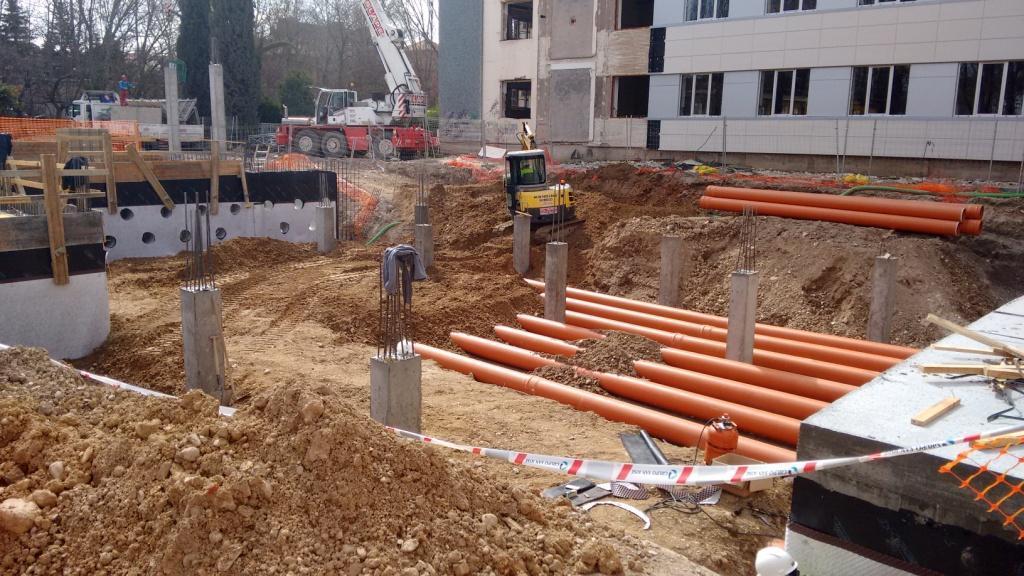
El sistema se construye en obra y se ha realizado con tubos de polipropileno reforzado REHAU
Calculista: Cristina Gutiérrez Cid
http://www.uva.es
Use of enthalpic recuperator combined with geothermal wells. For forced ventilation by CTE, an installation of geothermal pipes that preheat or cool the air, depending on the seasons, prior to entering the circuit, has been used as a support system. The energy equivalent of the contribution of this system is 31,726 kWh. This reduces the consumption of energy to condition the indoor air and starts the way for the exploitation of this system on a larger scale.
This system, used in LUCIA, a building previously built by UVA, has shown an excellent result.
ALBA-Gypsum board with phase-change materials
PLACO-RIGIPS- SAINT GOBAIN
Sergio Pérez- Saint Gobain Placo ibérica S.A.
https://www.placo.es/
The use of phase-change materials has been foreseen in certain parts of the building where it is considered important to improve the thermal inertia to balance the thermal jumps. It consists of the use of gypsum plaster that contains gel microcapsules of phase-change material. The use of this material is done experimentally, in order to establish results for future applications.
In this system, it has been considered that the thermal loads of the summer in certain orientations, mainly in the month of June (July is considered practically non-working and August null) will be the most difficult to combat. In certain classrooms, all its perimeter will be covered with drywall with the phase change material (Alba-de Rigips-Saint Gobain plates). It is expected that the delay in the thermal wave that this material can contribute to a thermal balance, taking advantage of the usual thermal jump between day and night in this climate.
PARANS- natural lighting devices with fiber optics
PARANS
http://www.parans.com/contact-en.cfm
http://parans.com
The project has determined the improvement of natural lighting through fiber optic lighting devices. The natural lighting of the whole building, especially in the classrooms, is direct and good, but in areas where this lighting inevitably does not arrive (interior corridors and distributors) or needs to be supplemented (classrooms 1.5, 2.5, 3.5, 4.5 and 5.5), (see diagram Fig. 1), it has been planned to introduce natural light through fiber optic transmission systems with Parans devices, of Swedish origin and not yet known in Spain. Thus, the natural lighting of all the spaces will be guaranteed, even those that are geometrically interior.
It is a system that introduces natural lighting in places without lighting: the objective is not the energy saving, but the improvement of health, taking into account the benefits of natural light, both in the purely hygienic and healthy field and in the psychological perception.
Construction and exploitation costs
- 5 700 000 €
Urban environment
The building is located at the University Campus, within the plot designated for that purpose. It has a great tradition in the city and, at the same time, a consolidated urban environment incorporated in the city, with many basic services in an area of consolidated urban density, with a good access and public transport.
The green areas of the project plot are especially interesting. For this reason, a careful study has been carried out with a specific project, which includes the promotion of biodiversity and the maintenance of the original gardening design of the plot, both for its own environmental qualities and control of the heat island effect, as well as the cultural qualities that it involves in terms of a design that has remained over time and several generations of students in the same place, representative of previous eras. The possible treatment of the existing inner courtyard and the landscape design of the exterior area linked to the building are being covered.
Land plot area
5 677,00 m2
Built-up area
37,00 %
Green space
3 182,00
Parking spaces
It is planned to provide an extensive parking for bicycles, for electric or special cars and, finally, a car parking, with the number of parking places required by the municipal ordinances, in the collective area of the Campus. The building is located at the University Campus, within the plot designated for that purpose. It has a great tradition in the city and, at the same time, a consolidated urban environment incorporated in the city, with many basic services in an area of consolidated urban density, with a good access and public transport.
The green areas of the project plot are especially interesting. For this reason, a careful study has been carried out with a specific project, which includes the promotion of biodiversity and the maintenance of the original gardening design of the plot, both for its own environmental qualities and control of the heat island effect, as well as the cultural qualities that it involves in terms of a design that has remained over time and several generations of students in the same place, representative of previous eras. The possible treatment of the existing inner courtyard and the landscape design of the exterior area linked to the building are being covered.
Building Environmental Quality
- indoor air quality and health
- biodiversity
- energy efficiency
- renewable energies
- integration in the land
- products and materials




